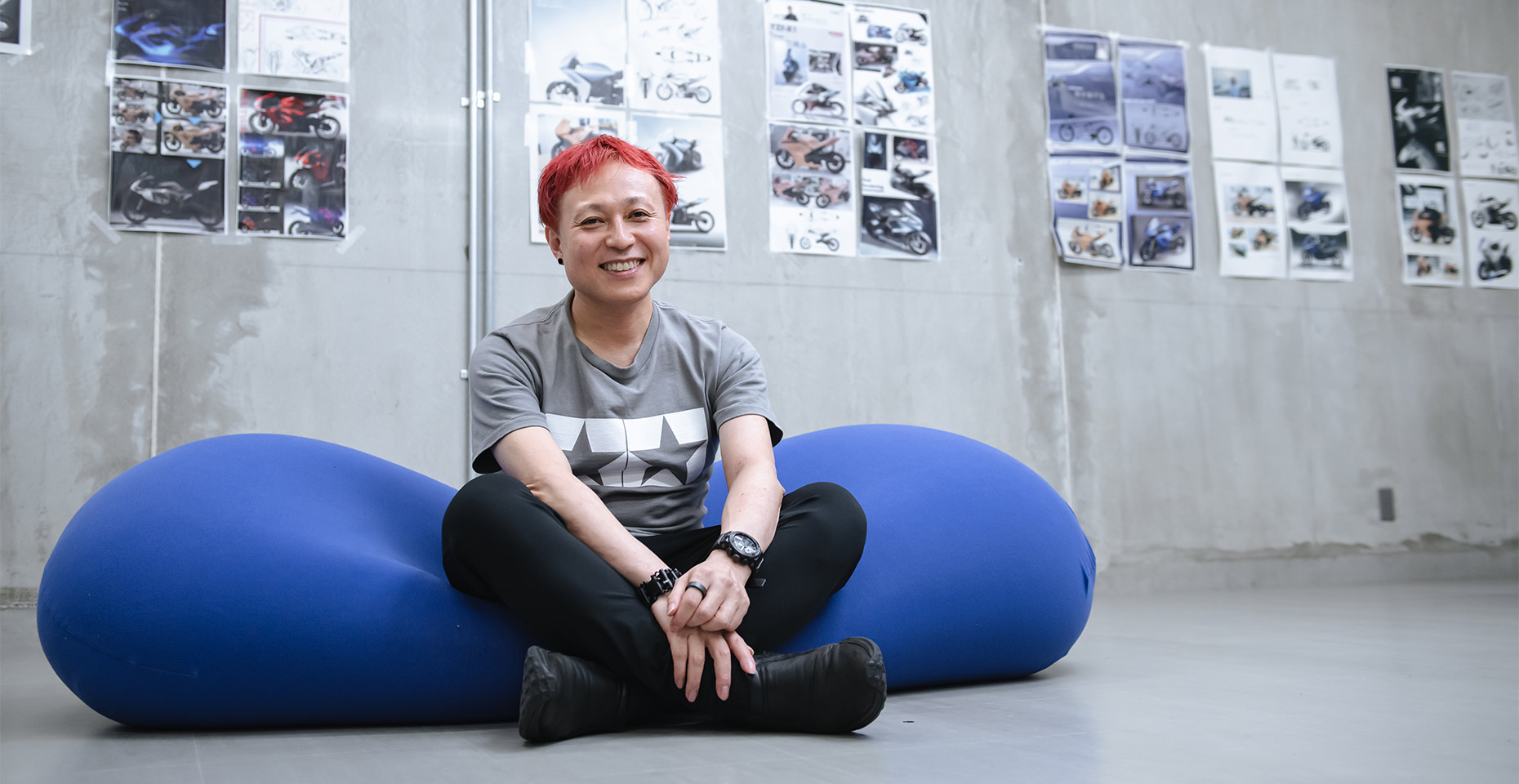“The car factory just across the street is fascinating, isn’t it? There are so many unique cars!” When talking about Sumida, the location of Chiba University’s satellite campus, the individual in front with vibrant red hair made his eyes shine even more. Kota Nezu, a product designer and professor at the Design Research Institute (dri) of Chiba University, emphasizes that designing through mobility is all about fostering connections with people and creating irreplaceable experiences.
Designers are team facilitators

In a hushed tone, he emphasized, “Drawing pictures is not the sole responsibility of a designer.”
The product designer functions as the team’s primary communicator. With the exception of the most brilliant minds, there is a limit to the quality that a single designer can achieve. On the other hand, working as a team sometimes leads to creations that surpass even the most ingenious individual efforts. The key lies in the designer actively communicating with team members. When trying to create something unprecedented, obtaining opinions may become challenging. Therefore, the approach involves extracting each person’s thoughts incrementally through verbalization.

Also, the goal is not merely to release the product into the world; Rather, it marks the start of a hypothesis test to determine whether the ‘best product we have conceived’ will be accepted by customers. In the realm of manufacturing, customers are regarded as integral team members. A prime example is a robot designed around the concept of ‘gradually becoming part of a family.’
Divergent opinions are a valuable asset, and the essential item is ‘communication’

“I get excited when I confront an enemy,” he expressed in an interview, sounding as if his words were lifted straight from MANGA (comic book)
Compared to my time as a university student, today’s students exhibit remarkable resilience, with some perceiving themselves as more mentally mature than I was. However, some may choose to give up at the slightest difference of opinion, perhaps due to discomfort with collaborative work. In the professional world, teamwork is pervasive, and not everyone in a group is naturally compatible. Conflicting opinions among those who share the common goal of creating exceptional products may often result from a lack of communication.
This belief is rooted in my experience as the concept development leader for a vehicle showcased at EXPO 2005*. A team member rejected all the ideas passionately put forward by others, leading to a sharp decline in the team’s motivation. As the leader, I found myself in a perplexing situation.
However, I later discovered that he had previously worked in the customer service department. He wasn’t simply opposing ideas; he was just offering insights into anticipated customer complaints. The moment I grasped his perspective, I developed a respect for him and began earnestly explaining our opinions to him. Gradually, his attitude softened, our relationship improved, and we successfully completed the project.

It’s natural to have a negative reaction to a new challenge, but I find joy in the process of delicately expressing my feelings, uncovering the other person’s true intentions, and fostering mutual understanding. Communication is the essential item for obtaining the ‘sweet treasure’ hidden beneath the ‘bitter powder’ of opposition and rejection.
A casual relationship with mutual respect that maximizes students’ ideas

In 2022, he assumed the role of a professor at Chiba University and has since been mentoring students at Sumida Satellite Campus.
Every Friday, I guide students engaged in tourism projects in Sumida Ward during the morning session, and in the afternoon, I work with students in the Mobility Design Laboratory. I find immense satisfaction in collaboratively generating ideas by sharing all my skills and experiences with the students.
In the Sumida Tourism Project, students gain hands-on experience by working on real projects for clients. Unlike typical research projects for undergraduate students, they must deliver results that can satisfy the client within the given deadline. Each week, I collaborate with my students to develop the best product that not only meets but exceeds client expectations, incorporating unique student ideas. I believe it’s my form of education to have students witness how active designers struggle to generate ideas.

The Mobility Design Laboratory is often perceived as a ‘design studio where everyone focuses on styling,’ but I place a high priority on respecting students’ individual interests. For instance, a student with exceptional manga-drawing skills chose to explore the theme of self-driving motorcycles for his capstone project, creating a manga that delves into mobility through the perspective of social psychology. This unique study investigates changes in the acceptance of self-driving motorcycles before and after reading the manga.

I envision the dri to be more than just an academic building; I see it as a genuine ‘hub for creative endeavors.’ Through heated debates with students consume me from morning to evening every week, the exhilaration and fulfillment derived from these interactions are truly irreplaceable.

Detailing the materials to craft ‘beloved cars’
He himself is an alumnus of the Department of Industrial Design, Faculty of Engineering, Chiba University. What were his student years like?
I worked on my assignments with utmost dedication, to the extent that I occasionally spent nights at school. My focus, particularly during my capstone project, centered on understanding the impact of materials. Altering the material of an object influences its presence and how people perceive it. Looking ahead to a future dominated by widespread autonomous driving, I applied the potential of materials in designing a compact electric vehicle in 2016.

Cars exert overwhelming power over people; an accident with one can even be fatal. While extensive safety tests are conducted for autonomous driving, no one can guarantee 100% safety. My goal was to create a vehicle that could coexist harmoniously with elderly drivers and pedestrians. I aimed to design a car in such a way that, in the event of an accident with a pedestrian, the individual would empathize with the car and express concern for car damages.
In the future, self-driving cars can be regarded as societal members with distinct personalities. In this scenario, a small and soft car that one can pet seems more favorable. Instead of the conventional iron, imagine creating one using soft urethane foam and cloth. I constantly brainstormed ideas about how I could freely change the car’s appearance with different fabrics.

Received the Best Award in ‘Kawaii Kansei Design Award 2016’ from the Japan Society of Kansei Engineering
Creating connections through mobility
We asked about the fundamental motivation behind designing mobility
The emergence of the new option ‘remote’ due to the coronavirus pandemic has promoted many individuals to reevaluate the significance of movement, with numerous people expressing stress. In reflecting on this, an insight struck me: perhaps people find support in ‘movement,’ and mobility could be considered a fundamental human right.
Ory Lab Inc. has developed a communication robot that can reach places where people may be unable to go due to various reasons, facilitating real-time communication. Could this be considered one of the ultimate forms of mobility, allowing bedridden individuals to explore through robots?
I was tasked with designing a transporter for this robot, enabling it to serve customers or carry items within various locations such as restaurants. I strongly resonate with the company’s philosophy of achieving the social participation of all people.

Visiting desired locations, meeting people, and fostering connections with others. These ‘movements’ relieve loneliness and instill a sense of valuing the future. Mobility, in its various forms, could be a tool that leads to global peace.
Raising the ‘resolution’ of eyes

Finally, we sought advice for those interested in product design.
Be curious about everything and strive to deepen your understanding of society. Everything in the world exists because someone created it. I encourage you to visualize the process behind its creation, asking questions such as: “Why was it made? How was it made? What materials were used?” and explore it from multiple perspectives. When you develop an interest in diverse phenomena, your ‘resolution of the world’ increases, revealing new aspects.
This heightened awareness often sparks personal reflections like, “Maybe I can make it better in this way.” This is the ‘seed of design,’ cultivated through daily contemplation. As your ‘resolution’ evolves, you will naturally develop a habit of thoughtful consideration, enhancing your ability to generate innovative ideas. We eagerly await hearing your unique perspectives. I look forward to meeting you at the Sumida Satellite Campus.
Series
The Power of Design
Meet our dynamic faculty members at the Design Research Institute (dri), a hub for designing future lifestyles located at Chiba University’s Sumida Satellite Campus
-

#1
2023.12.21
‘Synergistic Campus Evolution with the Community’ Chiba University Design Research Institute (Part 1): The Entire Campus as a ‘Design Experiment Space’
-

#2
2023.12.25
‘Synergistic Campus Evolution with the Community’ Chiba University Design Research Institute (Part 2): Igniting ‘Cross-fertilization’ for a Revolutionary Vision
-

#3
2024.01.17
Creating a Captivating Play Area for Kids: Inspiring Creativity through Innovative Play Equipment Design
-
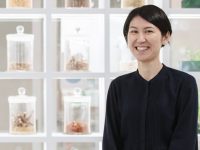
#4
2024.01.26
Designing a Comfortable Living: A Kampo Clinic that Simulates the Five Senses
-
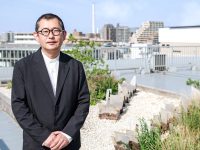
#5
2024.02.09
Creating Cities of Coexistence: Transitional Landscapes with the Tapestry of Diverse Lives
-
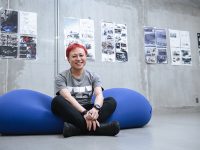
#6
2024.02.26
Designing Mobility: A Gentle Force in Linking People and Society
-
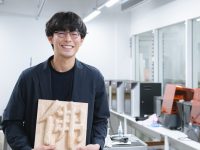
#7
2024.03.29
Touchable Buddha Project: Bridging Heritage and 3D Technology for Community Revitalization through Design
Recommend
-

An Insect Enthusiast’s Pursuit: Pesticide-Free Farming for Human-Insect-Crop Harmony!
2023.10.30
-

Navigating Offshore Wind Power Expansion: Nurturing Ocean-based Wind Energy Management Experts through Industry-Academia Partnership
2023.09.28
-

The Global Goal of Carbon Neutrality by 2050 (Part 1): Universities as Agents of Change
2023.07.12


